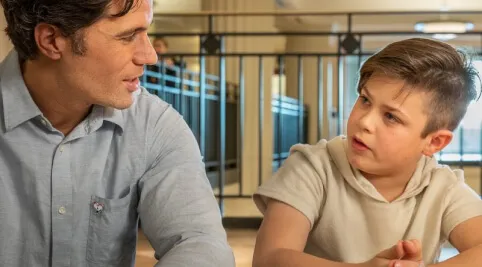
An Introduction To Gun Safety For Kids
The following resource guide focuses on the realm of gun safety as it relates specifically to children. The guide aims to explore the process of introducing kids to the fundamental principles of gun safety in a manner that is age-appropriate, respectful, and empowering.
Guns may appear mysterious and intimidating to children, making it essential for responsible adults to equip them with the knowledge and understanding needed to navigate situations involving firearms safely. The primary objective is not to instill fear or create undue anxiety but rather to empower children with the confidence to make informed and safe choices when it comes to gun safety.
Open and honest discussions are vital throughout this journey, and questions are not only encouraged but welcomed. Children are naturally curious, and these conversations provide an excellent opportunity to nurture their sense of responsibility and respect for firearms. With that in mind, the following paragraphs will delve into the fundamentals of gun safety for kids, presenting the information in a manner that is both understandable and memorable for young minds.
Gun Safety Starts At Home
One of the most important places to instill gun safety values in children is right at home. As responsible adults, it’s our duty to create a safe environment and educate our kids about the proper handling and understanding of firearms. Here are some key steps you can take to ensure gun safety starts at home:
- Safe Storage: The first rule of gun safety at home is proper storage. Always store firearms unloaded and locked in a secure storage device, such as a gun safe or lockbox. You can find comprehensive guidelines on safe firearm storage from the National Shooting Sports Foundation (NSSF), a Connecticut-based organization.
- Ammunition Storage: Keep ammunition locked away separately from firearms. This additional layer of safety prevents unauthorized access to both firearms and ammunition. For detailed advice on ammunition storage, visit Project ChildSafe.
- Educational Resources: Utilize educational materials and resources to teach your children about gun safety. Organizations like Eddie Eagle GunSafe® Program offer interactive programs and materials designed specifically for kids, teaching them what to do if they ever encounter a firearm.
- Childproof Locks: Consider installing childproof locks or trigger locks on firearms to prevent unauthorized use. Learn more about trigger locks and their effectiveness at Safe Kids Worldwide.
- Safe Handling: If you are a gun owner, lead by example by demonstrating safe handling and storage practices. Encourage kids to treat every firearm as if it’s loaded, and never point a gun at anyone, even if they believe it’s unloaded. The American Firearms Training website offers various courses and resources on safe firearm handling.
By implementing these measures and educating your children about the importance of gun safety at home, you create a secure environment where curiosity is met with knowledge and responsibility. Remember, you play a vital role in shaping your child’s understanding of guns, and the habits they develop at home will stay with them throughout their lives.
Talking To Kids About Gun Safety
Initiating a conversation with children about gun safety is a crucial step in keeping them safe. It’s essential to approach this discussion with sensitivity and age-appropriate information. Here’s how you can begin these conversations and a few resources to help you along the way:
- Start Early: Begin talking to your children about gun safety at an early age. Use simple language and concepts they can understand. Explain that guns are not toys, and they should never touch them without adult permission.
- Answer Their Questions: Encourage your children to ask questions about guns. Provide clear and honest answers that emphasize safety. If you’re unsure about any aspect, research together to find accurate information.
- Use Visual Aids: Visual aids like videos, books, or online resources can be valuable tools in explaining gun safety to children. Websites like KidsHealth offer videos and articles designed for kids that cover the basics of gun safety.
- Role-Playing: Role-playing scenarios can help kids understand what to do if they ever encounter a firearm. Teach them to “Stop, Don’t Touch, Leave the Area, and Tell an Adult” (S.A.F.E.) when they see a gun. The Eddie Eagle GunSafe® Program offers interactive materials that teach this approach.
- Consistent Messages: Ensure that all adults in the household or those who may be in contact with your children understand and follow the same gun safety rules. Consistency is key in reinforcing safe behavior.
- Encourage Responsible Reporting: Let your children know that if they ever find a gun in an unsafe situation, they should immediately inform a trusted adult. Emphasize that they won’t get in trouble for reporting it.
- Safe Storage Discussions: Discuss the importance of gun owners storing firearms safely with your children. Explain that some guns are kept at home for protection but should always be locked away securely.
By fostering open and age-appropriate discussions about gun safety, you empower your children with knowledge and confidence. The resources mentioned above offer valuable materials and guidelines for talking to kids about this important topic, ensuring they have the information they need to stay safe.
Lockdown Drills and Emergency Preparedness
In today’s world, schools conduct lockdown drills to prepare students and staff for emergencies, including potential threats involving firearms. While these drills can be unsettling, they are crucial for everyone’s safety. Here’s how you can discuss lockdown drills and emergency preparedness with your children and some resources to help you navigate these conversations:
- Explain the Purpose: Start by explaining the purpose of lockdown drills in a reassuring manner. Let your children know that these drills are like practice sessions, just like fire drills or earthquake drills, to help everyone know what to do in case of an emergency.
- Stay Calm and Reassuring: Emphasize that schools take safety very seriously, and these drills are part of a plan to keep students safe. Reassure your children that these measures are in place to protect them.
- Age-Appropriate Discussions: Tailor your conversations to your child’s age and maturity level. Younger children may need simpler explanations, while older ones may be ready for more detailed discussions. Websites like Safe Kids Worldwide offer guidance on having age-appropriate conversations about safety.
- Emphasize Listening and Following Instructions: Teach your children to pay close attention during lockdown drills and to follow their teacher’s instructions. Emphasize that staying quiet and still can help keep everyone safe.
- Address Concerns: Encourage your children to ask questions or share any concerns they may have about lockdown drills. Provide honest and straightforward answers while maintaining a reassuring tone.
- Review Emergency Contacts: Ensure that your children know who to contact if they ever find themselves in an emergency situation. Make sure they have access to important contact numbers and understand when and how to use them.
- Participate in Drills at Home: You can practice lockdown drills at home to help your children become more familiar with the process. This can help reduce anxiety and make them feel more prepared. Safe Kids Worldwide offers resources for home safety drills.
By discussing lockdown drills and emergency preparedness with your children, you can help alleviate any fears they may have and empower them with knowledge on how to stay safe at school. The resources mentioned above offer valuable guidance and materials to assist you in these important conversations.
Reporting School Safety Concerns
Encouraging children to speak up when they have safety concerns is a vital part of ensuring their well-being at school. It’s essential for kids to know that their voices are heard and their concerns are taken seriously. Here’s how you can guide them in reporting school safety concerns and some resources to help you address this topic:
- Open Communication: Establish a home environment where your children feel comfortable discussing their school experiences. Regularly ask them about their day, their friends, and any concerns they might have. Open communication is key.
- Explain the Importance: Discuss why it’s crucial to report safety concerns. Let your children know that reporting helps keep everyone safe at school and ensures that problems can be addressed promptly.
- Who to Report To: Ensure your children know who to report safety concerns to at school. This is typically a teacher, school counselor, principal, or another trusted adult. Encourage them to ask their teacher or a staff member if they are unsure.
- Role-Playing: Role-playing scenarios can help children practice what to say and do when they have a safety concern. You can create mock situations and guide them on how to approach an adult with their worries.
- Anonymous Reporting: Some schools have anonymous reporting systems in place, such as tip lines or suggestion boxes. Explain how these systems work and reassure your children that they can use them if they feel more comfortable doing so.
- Respecting Privacy: Teach your children to respect the privacy and feelings of others when reporting safety concerns. Encourage them to be truthful but also sensitive when sharing information.
- Reassure Safety: After reporting a concern, remind your children that school staff will take appropriate actions to address the issue while keeping their safety in mind.
- Resources for Parents: As a parent, you can find resources and tips for discussing school safety concerns with your children on websites like Common Sense Media and Safe Schools.
Empowering your children to report safety concerns fosters a culture of safety and responsibility within the school community. By creating an environment where they feel heard and supported, you help ensure that any potential issues are addressed promptly and effectively. The resources mentioned above offer valuable guidance on discussing safety concerns with your children.
Community Partnerships and Resources
Building strong partnerships within the community and accessing additional resources can further enhance your efforts to promote gun safety and protect our children. Here are some valuable resources and organizations that can provide support and information:
- Local Law Enforcement: Your local police department can be an excellent resource for information on local gun safety initiatives, community programs, and educational materials.
- Safe Kids Worldwide: Safe Kids Worldwide offers a wealth of resources and information on child safety topics, including gun safety, through their website.
- Project ChildSafe: Project ChildSafe provides educational materials, safety guidelines, and resources to promote safe firearm storage and handling. Explore their resources for valuable information.
- National Shooting Sports Foundation (NSSF): The NSSF offers resources on firearm safety, including guidelines for safe storage and handling. Visit their website for comprehensive information.
- Dad 2.0 Summit: Dad 2.0 Summit is a community of dads dedicated to promoting active fatherhood and responsible parenting. They often address topics related to child safety, including gun safety. Explore their resources and community discussions on their medium page.
Engaging with these community partnerships and utilizing additional resources can help create a safer environment for our children. By working together and accessing the knowledge and support available, we can make significant strides in promoting responsible gun ownership and ensuring the well-being of our communities.

